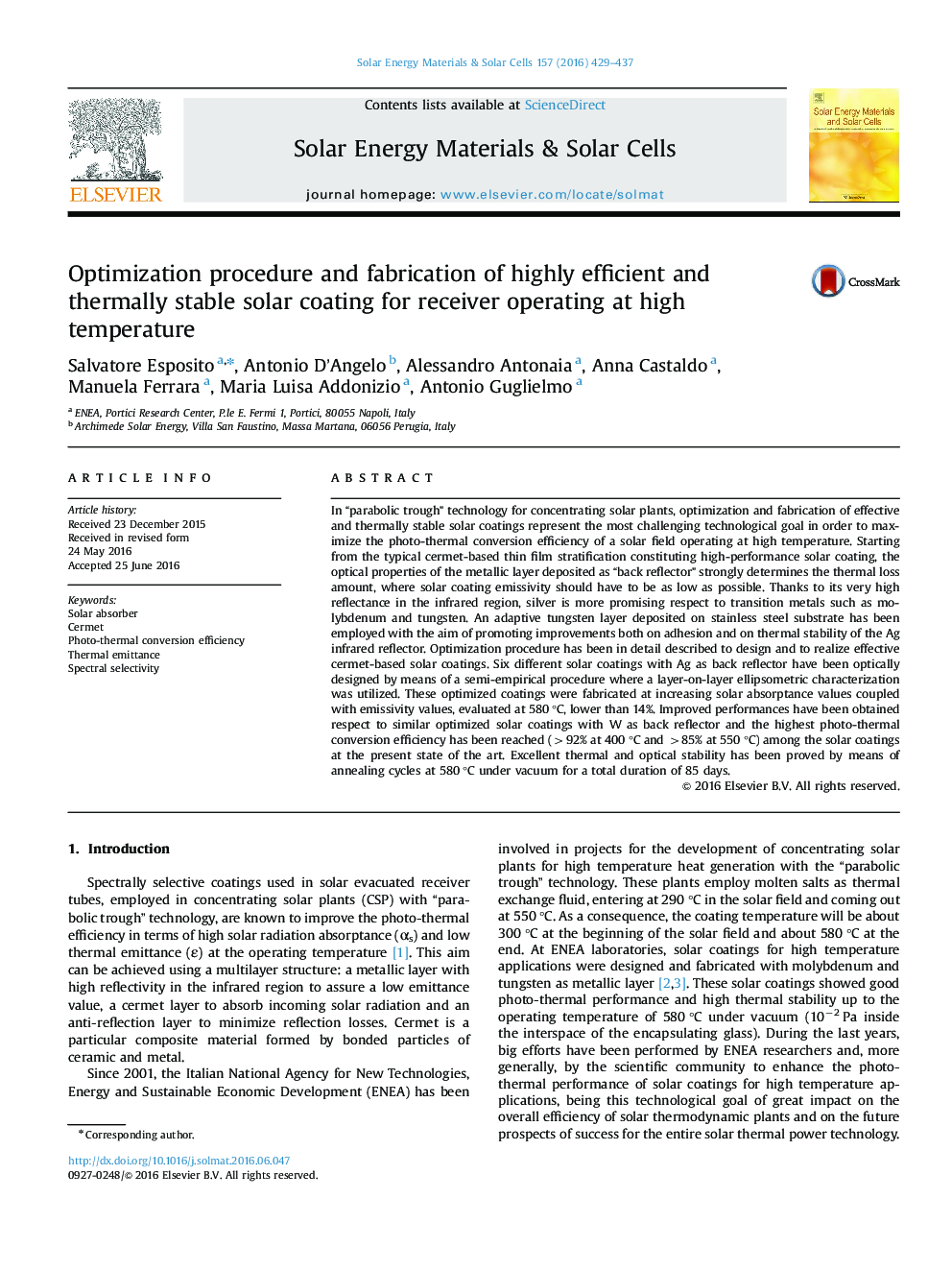| Article ID | Journal | Published Year | Pages | File Type |
|---|---|---|---|---|
| 6534606 | Solar Energy Materials and Solar Cells | 2016 | 9 Pages |
Abstract
In “parabolic trough” technology for concentrating solar plants, optimization and fabrication of effective and thermally stable solar coatings represent the most challenging technological goal in order to maximize the photo-thermal conversion efficiency of a solar field operating at high temperature. Starting from the typical cermet-based thin film stratification constituting high-performance solar coating, the optical properties of the metallic layer deposited as “back reflector” strongly determines the thermal loss amount, where solar coating emissivity should have to be as low as possible. Thanks to its very high reflectance in the infrared region, silver is more promising respect to transition metals such as molybdenum and tungsten. An adaptive tungsten layer deposited on stainless steel substrate has been employed with the aim of promoting improvements both on adhesion and on thermal stability of the Ag infrared reflector. Optimization procedure has been in detail described to design and to realize effective cermet-based solar coatings. Six different solar coatings with Ag as back reflector have been optically designed by means of a semi-empirical procedure where a layer-on-layer ellipsometric characterization was utilized. These optimized coatings were fabricated at increasing solar absorptance values coupled with emissivity values, evaluated at 580 °C, lower than 14%. Improved performances have been obtained respect to similar optimized solar coatings with W as back reflector and the highest photo-thermal conversion efficiency has been reached (>92% at 400 °C and >85% at 550 °C) among the solar coatings at the present state of the art. Excellent thermal and optical stability has been proved by means of annealing cycles at 580 °C under vacuum for a total duration of 85 days.
Keywords
Related Topics
Physical Sciences and Engineering
Chemical Engineering
Catalysis
Authors
Salvatore Esposito, Antonio D'Angelo, Alessandro Antonaia, Anna Castaldo, Manuela Ferrara, Maria Luisa Addonizio, Antonio Guglielmo,
